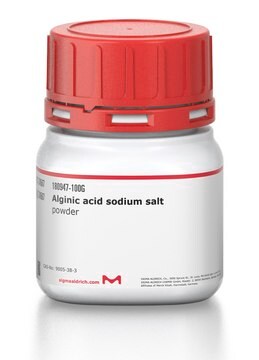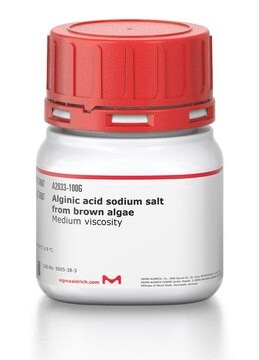About This Item
Produtos recomendados
fonte biológica
Thymus vulgaris and/or Thymus zygis oil
Nível de qualidade
grau
FG
Fragrance grade
Halal
Kosher
Agency
follows IFRA guidelines
conformidade reg.
EU Regulation 1223/2009
EU Regulation 1334/2008 & 872/2012
FDA 21 CFR 182.2
atividade óptica
[α]20/D −1°, neat
origem
France origin
índice de refração
n20/D 1.502
p.e.
195 °C
densidade
0.917 g/mL at 25 °C
aplicação(ões)
flavors and fragrances
Documentação
see Safety & Documentation for available documents
alérgeno alimentar
no known allergens
alérgeno de fragrância
linalool, citral (neral+geranial), limonene (sum of D, L and DL), geraniol, α-pinene and β-pinene
Organoléptico
herbaceous; camphoraceous
Procurando produtos similares? Visita Guia de comparação de produtos
Categorias relacionadas
Descrição geral
Aplicação
- Obliteration of H. pylori infection through the development of a novel thyme oil laden nanoporous gastric floating microsponge.: This study presents an innovative application of thyme oil encapsulated within nanoporous microsponges designed to target and eradicate Helicobacter pylori in the stomach, demonstrating the potential of natural compounds in medical applications (Jafar et al., 2024).
- Experimental trials to assess the immune modulatory influence of thyme and ginseng oil on NDV-vaccinated broiler chickens.: This research evaluates the immunomodulatory effects of thyme oil on vaccinated poultry, suggesting its utility in enhancing immune responses in agricultural practices (Hassanin et al., 2024).
- Antimicrobial polysaccharide hydrogels embedded with methyl-β-cyclodextrin/thyme oil inclusion complexes for exceptional mechanical performance and chilled chicken breast preservation.: Highlights the development of polysaccharide-based hydrogels incorporating thyme oil for food preservation, showcasing its antibacterial properties and potential for extending the shelf life of perishable goods (Chen et al., 2024).
- Corn cob nanocellulose packaging for increasing the shelf life of food products.: Investigates the role of thyme oil in biodegradable packaging solutions, enhancing the antimicrobial properties of corn cob nanocellulose composites, which could revolutionize sustainable packaging technologies (Cheran et al., 2024).
- Evaluation of the effectiveness of natural extract as a substituent for synthetic preservatives and antioxidants in pharmaceutical preparations.: Examines thyme oil′s efficacy as a natural preservative in pharmaceutical products, promoting its application as a safer alternative to synthetic additives (Al-Rimawi et al., 2024).
Ações bioquímicas/fisiológicas
Palavra indicadora
Danger
Frases de perigo
Declarações de precaução
Classificações de perigo
Flam. Liq. 3 - Skin Corr. 1B
Código de classe de armazenamento
3 - Flammable liquids
Classe de risco de água (WGK)
WGK 2
Ponto de fulgor (°F)
140.0 °F - closed cup
Ponto de fulgor (°C)
60 °C - closed cup
Equipamento de proteção individual
Faceshields, Gloves, Goggles, type ABEK (EN14387) respirator filter
Escolha uma das versões mais recentes:
Já possui este produto?
Encontre a documentação dos produtos que você adquiriu recentemente na biblioteca de documentos.
Global Trade Item Number
| SKU | GTIN |
|---|---|
| W306509-4KG-K | |
| W306509-9KG | |
| W306509-1KG | |
| W306509-1KG-K | 4061838249180 |
| W306509-4KG | |
| W306509-9KG-K | 4061838192653 |
| W306509-SAMPLE | |
| W306509-SAMPLE-K | 4061837519291 |
Nossa equipe de cientistas tem experiência em todas as áreas de pesquisa, incluindo Life Sciences, ciência de materiais, síntese química, cromatografia, química analítica e muitas outras.
Entre em contato com a assistência técnica





